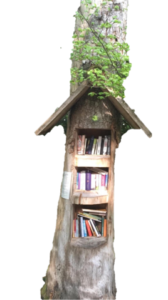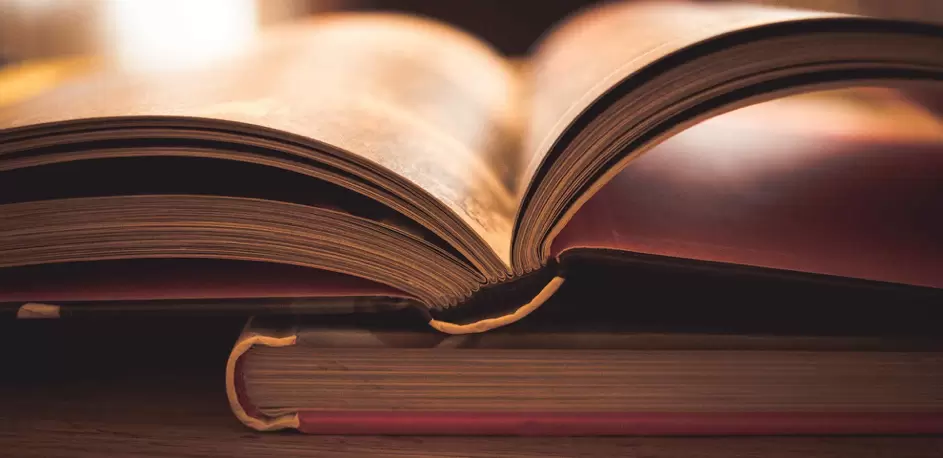Book sharing – a great way to help our environment. We can share books through different ways such as sharing between friends or family members or using libraries. You will also read about another way to share books.
Own experiences
We often do book sharing, because it’s not necessary to buy a new book just to read it once. After you read a book, it’ll take a lot of space and you don’t know where to put the book. Sharing is the easiest way to get rid of it. In our opinion it’s a great way to help our environment and we would definitely recommend it to everyone!
General
As another word for book sharing we also use book change, book swapping or book crossing. The word book sharing was used in 2000 for the first time (USA). But we guess people already used it before 2000. The aim of the book exchange is the sustainability (=Nachhaltigkeit). [1]
Pro book sharing
Book sharing contains a lot of advantages:
Book sharing is very cheap. That’s why people get animated to read. Through book sharing you get to know different authors and stories. Besides, book sharing is great for our environment, because a lot of wood (trees), water and other valuable resources can be saved. It’s not necessary to stow them away at home. Another advantage is to exchange your opinion about a book. There are a lot of apps with this tool abroad. For example in the USA, England or Germany.
Energy calculation
We asked ourselves whether a book or an iPad (eBook) is actually more environmentally friendly. We have created a small chart to compare this.
An iPad needs about 15 kg of minerals to produce while a book needs 0.3 kg. A book also needs a large amount of sand and gravel and 9 liters ofwater. For the battery and circuit board of the iPad 300 liters of water are needed. As far as energy is concerned, the iPad needs more, namely 100 kilowatt hours and the book only 2 kilowatt hours. Also the CO2 emission of the iPad is higher (33 kg). With the book the emissions are 100 times smaller!

If transport and the entire period of use of the book is involved, the iPad can show its advantages. A book can be read for 2-3 weeks and an iPad can be owned for longer. If you order a book from Amazon, it causes environmental pollution that is about half as big as the pollution that was used to produce the book. Emissions for buying a book in the online shop are close to zero. If you take into account the listed raw materials, i.e. water, energy and minerals, an iPad is worthwhile from 40 to 50 books read. If you take an average of one book read per month, it takes a whole 4 years until the iPad is ecologically profitable (the older the iPad is, the longer the time span). [2, 3]
Tree library
There is a tree library inside a tree in a forest in Hinwil. People can cycle or walk to the place and take some books out of it or bring their own books for free. This is a great way to share books and it’s very supportive for our environment too.
Our idea:
You could take a book from this library and write a few word on the first page of it. Maybe some requests or greetings. It would also be an option to write down the phone number or E-Mail address to exchange the opinion of the book. Everyone who read the book should write a few words after reading it. It would be very interesting so see how many people read the same book and you could also talk about the quality of it. We definitely will try it out! You could give it a try too. So if you’re interested in visiting the tree library, let’s take a look!

Book sharing website
Another way to share books besides the tree library is the website book crossing (https://www.bookcrossing.com/about). Though the website you can exchange books and you can even get in touch with persons who already read the book. In our opinion it’s a great and modern way to reuse books. The book crossing website is available in 132 countries and there are 13’276’191 books which are crossing the world. Book sharing websites are very common in countries like the USA or Germany. All you have to do is to create an account on bookcrossing.com and you’re able to share your books. Let’s try it out! [4]

Book sharing on Instagram
Besides the website and the tree library we found another useful way to share books. A high school graduate has created an Instagram account where books are sold at a fair price and are even partly new. The goal of this account is to recycle for the sake of the environment. The target group are high school students (Gymnasium, BMS, FMS, etc.) We looked at this account and realized that we could have benefited from it. Many books and readings that we had to buy for the school are sold here cheaper and used. We are a bit disappointed that we didn’t discover this site earlier…But now we can advertise a bit and hope other students can benefit from it. Just search for “simplebooksclub” on Instagram. If you find a book you need, you can contact the admin (direct message or comment). Hopefully we can try it soon.

Experience and reflection
We actually had a good start. When the lockdown followed and we weren’t sure for a long time what would happen with our graduation, communication and teamwork became more difficult. About a month ago we found out that there were no final exams. For this reason we were able to devote ourselves to this project without any stress. During the past weeks we learned how much energy it takes to produce an iPad and a book, that there is a tree library in Hinwil and what other possibilities there are to share the books.
We’ve chosen the topic, because we both think it’s a very interesting way to share. We’re both interested in our environment. That’s why we also tried to show other ways to share books (for example the tree library) instead of just giving it to a friend or family member. It was interesting for us as well to read the facts about book sharing. The project showed us, that there are different ways to do book sharing and to help the environment. We researched a lot (general facts and numbers for example) but we were able to share our knowledge about the project as well.
Our teamwork was good. We often split up the work, especially because we’ve had homeschooling the last few weeks. That’s why we weren’t able to meet. But if we had questions, we could ask one another. That’s why we talked a lot through teams to create the project. We’re at the same english level, that’s why we were able to trust each other in regard to grammar mistakes. We sometimes had different opinions, but in the end we always found a solution, which is very important.
Thank you for reading!
Deniz and Maria
Reviewer: Elias Bai (Maria’s brother)
Links:
[1] Book sharing, (wikipedia.org), Leserattennest, August 2019
[2] How green is my ipad?, (archive.nytimes.com), Daniel Goleman and Gregory Norris, April 2010
[3] Sind E-Book-Reader umweltfreundlicher als Bücher?, (quarks.de), Anonymus, October 2018
[4] Book Crossing, (bookcrossing.com), American team, April 2001
[5] Logo BookCrossing, (sch155interact.wordpress.com), Anonymus, April 2017
[6] Cover Picture, (benjamin-brueckner.de), Benjamin Brückner, December 2014
On-topic posts on dontwastemy.energy
Paper’s life cycle
☷ See the project teams here »
☵ Some words about the contributions »
☴ Our sponsors and partners » (the-horse.education)

Very interesting topic! I really like the idea of book sharing, it has many positive aspects and also saves you money. The tree library is very cool and I will learn more about it.